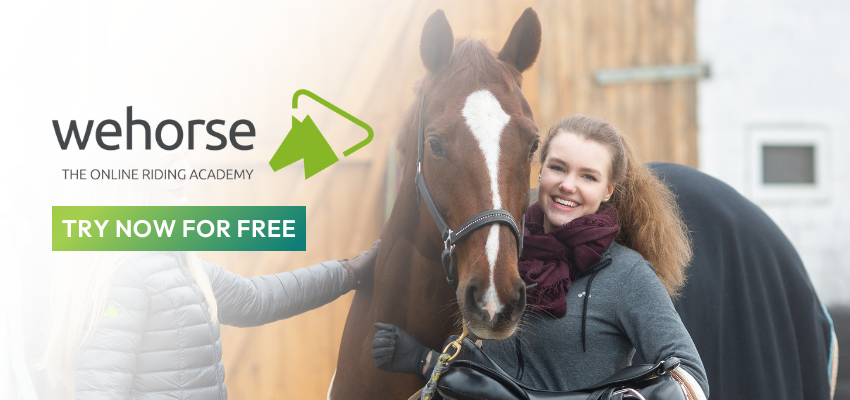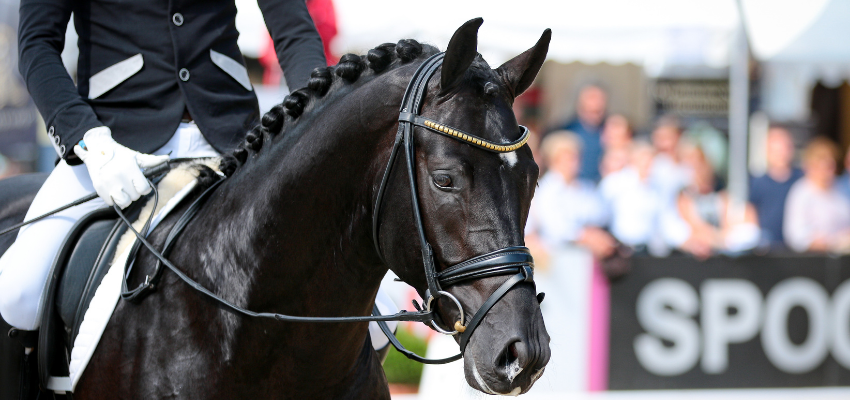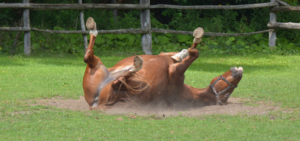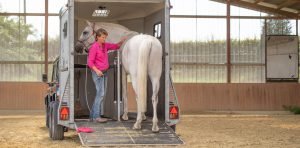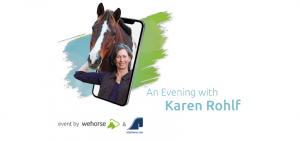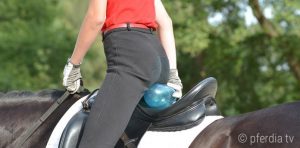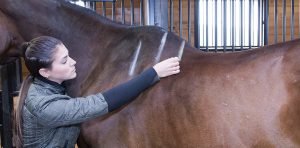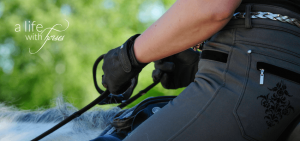It’s time to train your eye for horse-friendly training! There has been criticism of dressage for years, and not always without reason… All too often one sees too-tight horse necks, exaggerated stepping of the front legs, and stressed horses in the warm-up arenas. Classical dressage trainer Anja Beran explains what damage this can do to the horse’s health, how to recognize correct and incorrect training, and why modern dressage and the overall training of horses has to change.
Table of Contents
- What is wrong with modern dressage?
- The faults most commonly seen at dressage competitions
- What are the consequences of bad riding for horses?
- Training your eye: What does good and horse-friendly riding look like?
- What goes wrong in the training of young dressage horses
- How classical dressage trainer Anja Beran does it
- Why training your eye is so important
What is wrong with modern dressage?
What is currently going wrong in dressage and what are the consequences for the horses? In her course “Training the Eye – Recognizing Horse-Friendly Training,” Anja Beran points out undesirable developments in the training system. She backs up her criticism with animations. These animations are actual footage from international competitions (no one is personally targeted as you can only see silhouettes of the riders). The problem is apparent: we’re training young horses too early and quickly. There are also an increasing amount of mistakes in training that are not seen or evaluated as mistakes.
In this course, you’ll receive an overview of horse training based on classic models, such as what is taught when, and why? Then, these training stages are compared to what is often seen during competitions. During the course, a veterinarian explains what these differences in movement can do to the horse’s body and what health consequences to expect.
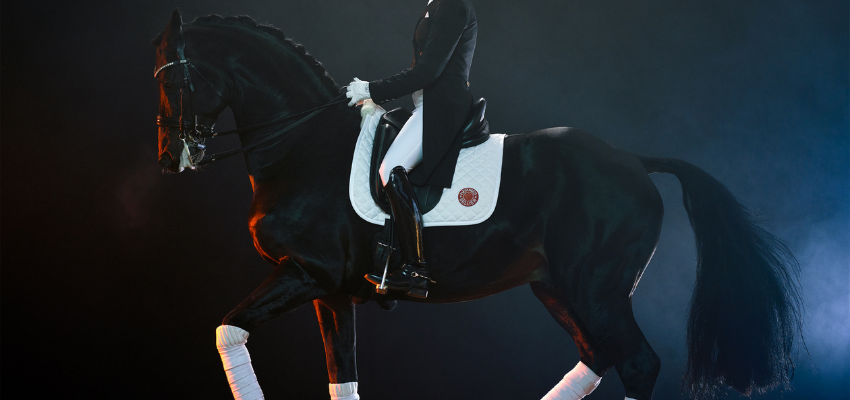
The faults most commonly seen at dressage competitions
In the higher levels, one can recognize training errors particularly well in the piaffe. If you look closely, you can see the small but significant differences. These differences distinguish between meaningfulness and the damage that this training can cause.
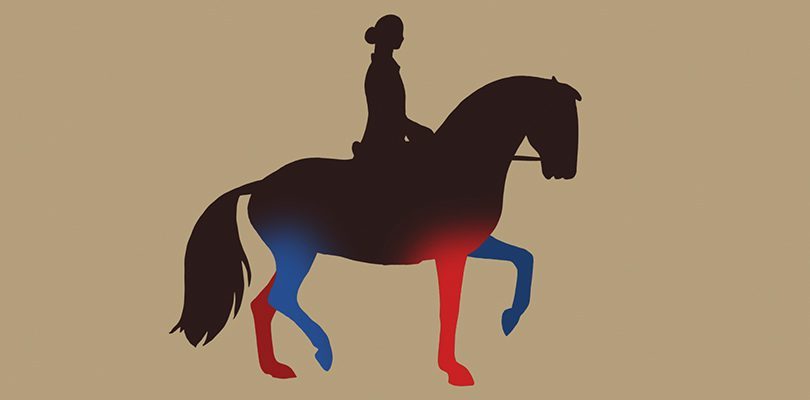
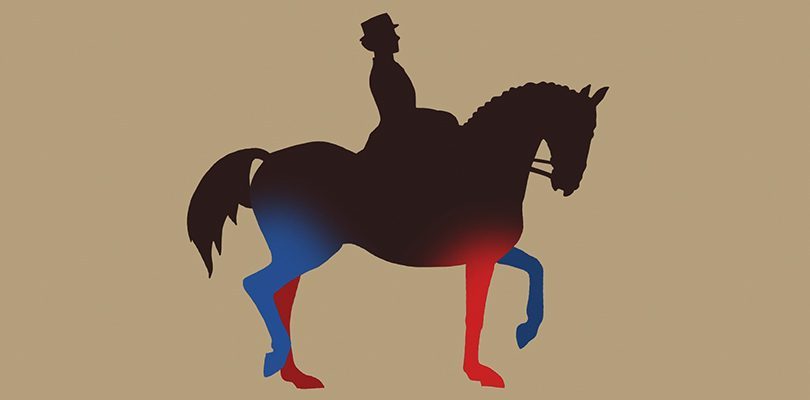
Anja Beran uses further examples in her course that show that internationally successful horses sometimes show striking movement patterns. However, these are not compatible with correct riding and training.
Another common mistake is keeping one hind leg in the air longer than the other in piaffe and passage. Interrupted, non-flowing movements through the horse’s body and non-parallelism of the limbs are not uncommon in the strong trot. You often see a spectacular action with the forehand, but the hind end doesn’t follow suit enough, and it pushes out to the rear. In summary, joints are no longer flexing sufficiently in the movement and this results in incorrect loading.
What are the consequences of bad riding for horses?
Unfortunately, the horses pay with their health. Anja Beran concludes that many developments in modern sport riding have led to changes in movement. These are unnatural and give the horses the wrong weight. Often, the horse is not given a health maintenance check. She finds very clear words for this:
“We have made artificial processes out of dressage; out of a classic, natural training of an animal, which results in movements that a horse actually doesn’t do at all. These movements are rewarded with high marks and it’s at the expense of the horse’s health!”
The co-speaker of the lecture, veterinarian Elisabeth Albescu, explains what, for example, an incorrectly ridden trot can mean for the horse’s health. If the neckband tension is too strong, this can lead to calcification at the base of the neckband. This is the body’s attempt to strengthen the neckband. This in turn leads to less mobility in the poll and pain for the horse in the long term.
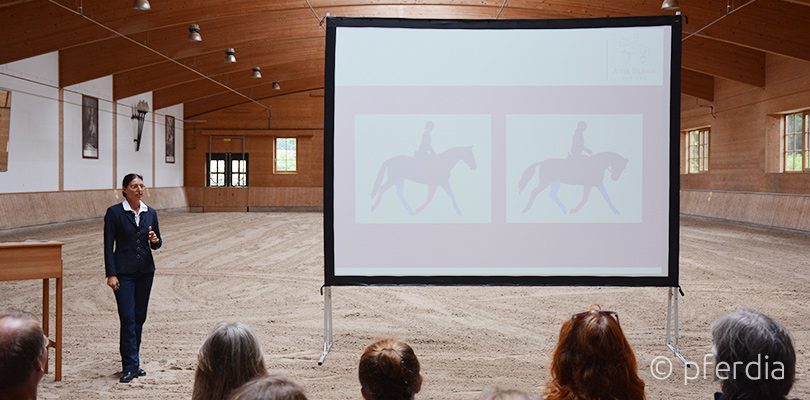
Training your eye: What does good and horse-friendly riding look like?
Bending the joints is a very important milestone in training. Therefore, correct backward movement should put weight on the hindquarters, explains Anja Beran. Due to the diagonal movement, this training is also an ideal preparation for the piaffe.
This example should make it clear that dressage lessons should always have a purpose and build on one another. They pursue the goal of gymnastics and strengthening the horse and are not an end in themselves. Anja Beran likes to incorporate lateral movements into the training of horses in order to improve suppleness in the rib areas. It also playfully introduces the horse to stepping under with the hindquarters.
In all exercises, the poll should be at the highest point, the gaits open, and the joints slightly flexed so that the horse appears taller in the front. It should move loosely and fluently with a contented facial expression. You can also feel good riding because a satisfied horse likes to offer itself to the rider and has permeability.
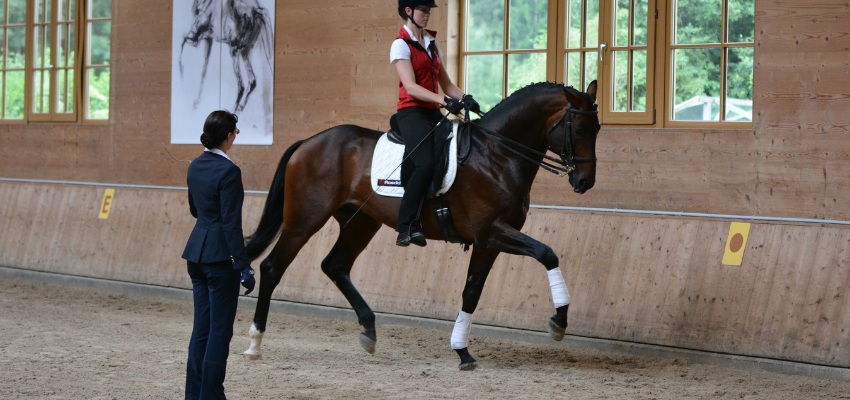
What goes wrong in the training of young dressage horses
Even with the basic training, the differences are serious between what is in the guidelines and what traditional trainers like Anja Beran practice.
Young horses are ridden too early, and too much. “So many people think that three-year-olds are supposed to look like six-year-olds,” she says. These are the key points that Anja says guarantee real basic training:
- The young horse does not receive any conflicting aids (no holding in front and putting pressure on the back!)
- Anja recommends avoiding the use of auxiliary reins.
Often, young horses are manipulated into a certain shape. Veterinarian Elisabeth Albescu explains how harmful this is. When a horse’s body is put together too early, it causes muscle tension. Muscle tension is just the beginning of a vicious circle.
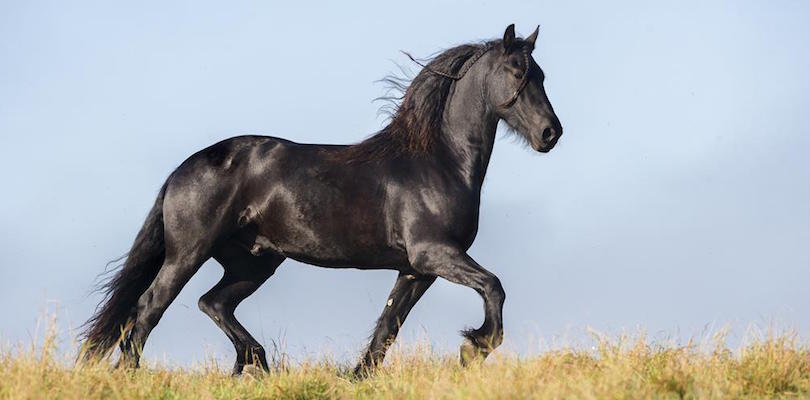
Why training your eye for horse-friendly training is so important
So what do you do? Anja Beran’s advice: Educate the equestrian world.
It is precisely this enlightenment that the trainer is concerned with in this course. “If it’s a matter of looking spectacular but the horses wear out earlier and earlier, then something isn’t right!” she says.
This is where all riders come in. It is also the responsibility of non-professionals to recognize good training and to be able to perceive harmful training. Training the eye is not only very important for the judges of competitions, but for everyone. For the benefit of the horses!
Are you interested in this and other courses by Anja Beran on classical dressage? Then visit our website.
